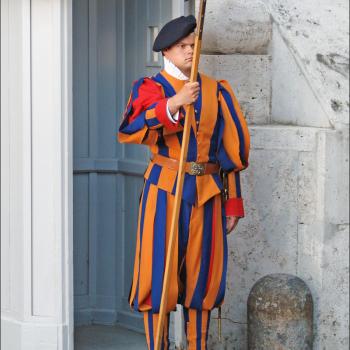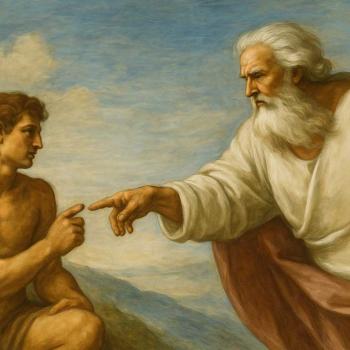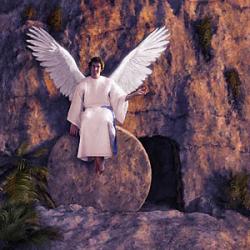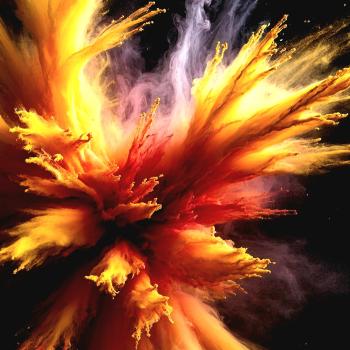I called out once more and I was answered. I had asked, "Is anyone out there? Does anyone care?" I heard "I care," plainly, softly, like a hushed wind or the song of sea and surf. I wanted to make certain that I was actually hearing the divine, and not just my own mental chatter. Seeking conformation, I asked her name, which she kindly gave me. I looked her up and discovered that she existed, in a pantheon I had never heard of before. From then on I embarked on learning all I could, meditating, and honoring the deities as best I knew how. Her existence answered questions I had batted about in the back of my brain for quite a while. I have stayed with this religion because I feel a strong connection with the deities, and I am fascinated by the ancient culture that first venerated them.
Do you maintain a devotional practice to any specific Deities?
I try to honor as much of the pantheon as I can. I started out honoring Ilu and Athiratu, the reigning god and goddess of the pantheon. I'm drawn to Shapshu, the sun goddess, and Yarikhu, the moon god since I see them in life every day; I like to call out to them in greeting. I enjoy visualizing Nikkalu in the tree branches reaching toward Yarikhu, her love. I respect Baalu Haddi (Baal Hadad), the storm god, as a protective deity. I look to 'Athtartu (known later in Greek as Astarte) to help me maintain my balance and fairness in the affairs of community, while I feel that honoring 'Anatu ('Anat) helps me reconnect and understand my own strength, intensity, and mettle.
I have begun recently to include Rashpu (Rashap, Reshef), a god of war, pestilence, luck, health, and passion, and Choronu (Choron, Horon, Hauron), a god of exorcism and protective magic, in my venerations. I feel a more distant, but growing, connection to Kathiru-wa-Khasisu (Kothar-wa-Khasis, Kothar-wa-Hasis), the god of craftsmanship, technology, and magic; I often call upon him when I'm having technical difficulties, and the problem will usually resolve. Yammu (Yam, Yamm), the sea and river god, fascinates me, but I have been reluctant to include him much yet because of his fierce primordial nature.
Is there any connection between Canaanite Paganism and Judaism?
The Israelites were a daughter culture of the Canaanites, as were the Phoenicians, but Western culture, often preoccupied with the people of the Bible, tends to focus on the Israelites. The ancient Israelites were more typically rural and they became monotheists, while the Phoenicians were largely urban and polytheistic. Elements of Canaanite culture have survived into some Jewish traditions, but also in Christian and Lebanese folk traditions. Practices with commonalities between Judaism and Canaanite religion include the Canaanite harvest festival 'Ashuru Mathbati and the Jewish holiday Sukkot: both involve the creation of small dwellings, and both honor the late summer-early autumn harvest. There is a rite of communal expiation that, although we don't know the timing for the event, bears a resemblance to Yom Kippur. However, an example of a commonality between Canaanite religion and Lebanese custom can be found in the Rakia, a prayer to ward against the Eye; similar prayers have been translated from Ugaritic texts.
Generally speaking, Judaism and Judeopagan practices are different from Canaanite Pagan practices. Judaism and Judeopaganism often focus on one god sometimes with a feminine counterpart, Jewish cultural elements, Jewish heritage and ethnicity, and the Hebrew Bible. In contrast, Canaanite Paganism, or at least the version I practice (Natib Qadish), involves a broader pantheon, focuses more on Canaanite—pre-Jewish and pre-Arabic—culture and literature, maintains a critical eye on polytheistic practices described in the Bible, and does not emphasize any particular cultural background or ancestry. Indeed, many of us already have a cultural if not an ethnic connection to Canaanite religion through previous association by ourselves, our ancestors, or our neighbors with Christianity or Judaism.
There are some who consider themselves Canaanite Pagans who focus on Canaanite-Israelite religion and who may incorporate more early Israelite or even later Jewish practices. There are some who focus on Canaanite-Phoenician religion, and incorporate Phoenician aspects, and even Hellenized Phoenician aspects. And there are some who prefer to focus on Bronze Age Canaanite/Ugaritic material—into which category I include myself. When I say "focus" I do not mean "concentrate to the exclusion of." I mean "emphasize, center on, spotlight." After all, many of these categories overlap and are not mutually exclusive.
In your opinion, what are the biggest challenges facing the reconstruction of this religion today?
Although Canaanite religion began in the Bronze Age, the modern revivification of it is relatively new to the modern Pagan and polytheist scene, and the Canaanite culture is not well-known today. Everyone knows about the Greeks, the Egyptians, and the Romans, but when I mention the Canaanites, many times I get a blank look and "Canaanites? Who are they?" If someone does know about the Canaanites, it's often through the Cecil B. DeMille classic film The Ten Commandments—in which case I get asked about orgies, which, I might add, are absent from ancient Canaanite religious texts. Besides, the closer one gets to the "B-word," i.e. the Bible, the more many Pagans become nervous.





